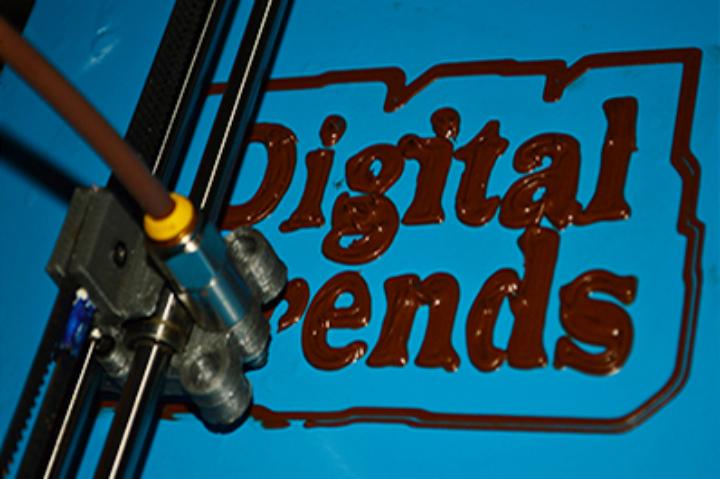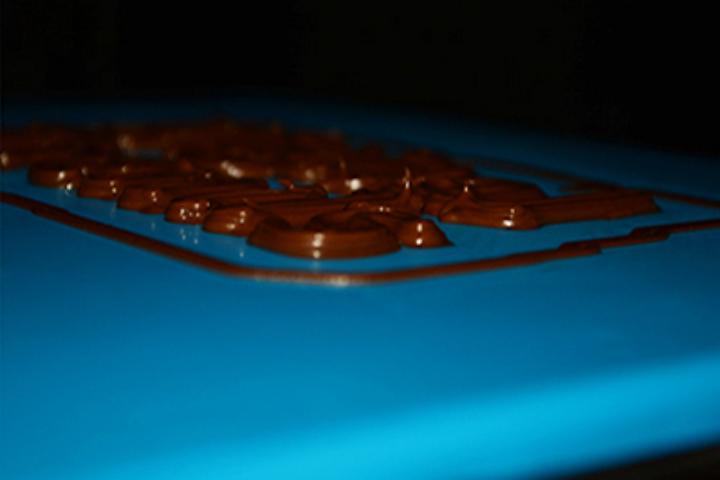We generally associate 3D printers with things made out of plastic (even though they can make everything from houses to cars), but this 3D printer, called Candy, makes sweets. Not just sweets either, but pretty much anything your sweet tooth desires, including cookies, icing for the top of cakes, and custom designed chocolates, too.
Candy takes 3D printing out of the workshop, and puts it in your kitchen right alongside your Nespresso machine. The latest in a string of 3D printers to hit crowd funding website Kickstarter, it’s described as the first affordable, food-specific model to hit the market. How affordable? It’s $500 if you get in on the limited early bird offer, or $600 if you miss out.
Designed in a non-threatening way, so it won’t look too out of place on your kitchen worktop, Candy has also been engineered to be very easy to live with and use. The body is made from fiberglass, making it light, and all the important components can be removed and cleaned as needed. To use it, pour your choice of sugary goodness into the dispenser, load a recipe, and let the printer get to work. A regular 3D design of relative complexity, such as the Digital Trends image you see here, takes between five and 10 minutes to produce, but some can take even less.
Candy’s extruder — the bit that squirts out your mixture — can handle just about any semi-solid foodstuff, from Nutella and peanut butter, to icing sugar and marzipan. Recipes are downloaded from the Internet, or chosen from a pre-built selection which comes with the printer, and placed on an SD card. You make your selection using the printer’s screen, which also provides information on the device’s progress once your food is being printed.
Related: Five awesome desktop printers that can bring your ideas to life
Razvan Creanga, the man behind the Candy project, has big plans for the Candy. After highlighting its simplicity he told us he doesn’t just see it being used by families in the kitchen, but by chefs too, picturing it removing some of the time pressure out of creating unique designs in a retail environment.
The project is underway on Kickstarter now, and the target is $100,000. Should it be funded, the first Candy printers will be shipped out in March and April next year.





